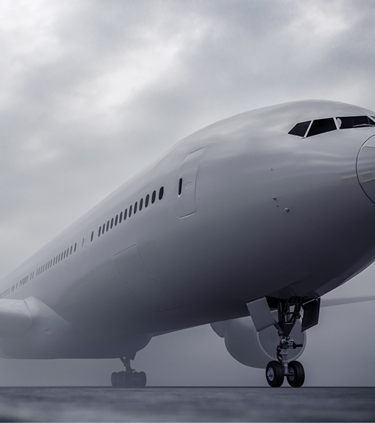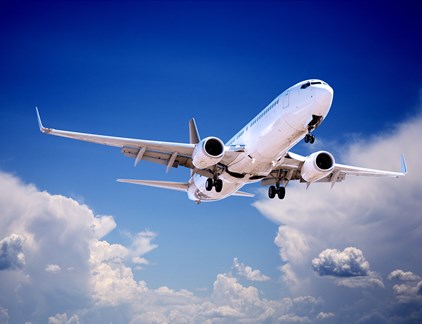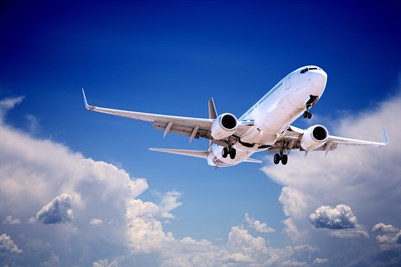We sat down with Masoud Sarwari to find out exactly what LPV is, the type of cost savings it can generate, and to learn all about the mandatory aspects involved.
8 minute read.


We sat down with Masoud Sarwari to find out exactly what LPV is, the type of cost savings it can generate, and to learn all about the mandatory aspects involved.
8 minute read.
This week we met with Masoud Sarwari, the Product Manager in Fokker Services Group’ Modifications and Engineering Services department. Amongst other responsibilities, he analyzes performance and leads strategic decision-making for specific products within the businesses modifications portfolio. One of the modifications on offer is LPV - so we sat down with Masoud to find out exactly what this product is, the cost savings it can generate, and to learn all about the mandatory aspects involved.
Let’s kick things off. Can you tell us about what LPV is? How does it work?
LPV stands for Localizer Performance with Vertical Guidance, and it is part of the bigger Performance Based Navigation (PBN) concept. It is an RNAV/GNSS-based approach with vertical guidance and is operationally similar to an Instrument Landing System (ILS) CAT I. What that means is that LPV gives you the same minima as ILS CAT I, and is the lowest minima option available as an RNAV/GNSS-based approach.
How long has LPV been around for?
The ability to use LPV requires Satellite Based Augmentation System (SBAS) coverage. So you need SBAS availability to use LPV. In Europe, EGNOS became operational in 2011, at which point airports then started to plan and implement LPV approaches. WAAS in the U.S. has been around for even longer, since 2003.


You mentioned SBAS availability in Europe and the U.S., where are the other SBAS regions located?
Today, SBAS is available in many parts of the world: in Europe there is EGNOS; in the United States, Canada and Mexico there is WAAS; GAGAN in India; and MSAS in Japan. These are all operational right now. There are other regions working on an SBAS solution, like Russia, China and South Korea for example. We also see that some SBAS regions are still increasing in coverage, so more parts of the world will receive SBAS coverage over time. For example, EGNOS may eventually reach bigger parts of Africa.
All the SBASs comply with a global standard that makes the systems compatible and interoperable. This means that our LPV solution, for example, works with EGNOS and also WAAS. Operators can use their SBAS capable solution, while benefiting from the same service and performance, in all SBAS areas.
LPV approaches are available at many airports around the world. As more regions implement their own SBAS, even more LPV approaches will be implemented in the future. In the U.S., over 4,000 LPV approaches are available across more than 1,900 airports. In Europe, there are approximately 1,500 LPV approaches in the works - around 760 are operational, and the other 800 are being planned and should be available in the next couple of years. We see these numbers increasing every year. For example, so far in 2020 over 100 LPV approaches have become active in Europe, compared to around 100 in the whole of 2019.
Is LPV mandatory?
This is where it gets interesting. LPV is an EU mandate for airport runways. This means that LPV approach capabilities must be implemented where there is appropriate EGNOS coverage. These are the deadlines:




When these mandates arrive, we will have a situation where airports across Europe with an ILS CAT I approach will also have an LPV approach. Both are similar to each other, but the big difference with LPV is that there is no equipment needed on the ground - it’s all satellite based. This makes the system very interesting from an economic standpoint for airports, and ILS CAT I systems will likely be phased out because of the maintenance and recertification costs involved. Why pay these fees when you have LPV? There is little benefit in having both options.
Aircraft will need to have an approach type that matches the airports.
What do these mandates mean for operators?
The mandates are for European airports, but in the end will also impact operators - from commercial airlines to lessors and cargo. Runways across Europe will have an LPV approach by January 24, 2024 at the latest, and some airports are already phasing out ILS CAT I systems. Therefore, aircraft will need to have an approach type that matches the airports, which means that aircraft will need to have LPV capability if flying an LPV approach. Operators not equipped and certified with LPV could result in eventually not being able to land at specific locations.
Also, PBN will become the standard for all operations in Europe by 2030. If operators have aircraft that often use ILS CAT I or GLS, they will have a problem because these will become a back-up option and may be decommissioned altogether. Therefore, operators will need to implement another approach type in Europe. For now these mandates are applicable for Europe, but other SBAS locations may implement similar rules in the future.
Why should operators make LPV their primary approach? What other options do they have?
Operators do have other choices, such as LNAV/VNAV, or options without vertical guidance. However, these are all less favorable because LPV is the approach within the PBN concept with the lowest minima. It’s the best option, allowing operators to secure their approach more with LPV compared to any other approach type.
What cost savings can operators expect when investing in an LPV modification?
There are a few angles to keep in mind here. LPV allows pilots to land seamlessly in unfavorable weather conditions, reducing the risk of delays, diversions or cancellations. Since aircraft may not need to redirect to a new location due to diversions, there can be further savings for the operator with fuel and emissions. Not to mention the other costs associated with interruptions due to poor weather, such as customer refunds, reimbursements, etc.


Also, LPV ensures the accuracy of an ILS CAT I, but without localizer or glide slope interference issues. SBAS improves the GPS input and makes this more reliable, offering a more stabilized and direct approach. As a result, this provides the best fuel consumption option due to the smoother landing offered by LPV. If there are ILS CAT I problems on the airport side, such as malfunctions, aircraft are unable to complete their approach.
For customers based in an EU member state, it’s worth noting that the European GNSS Agency (GSA) has several funding opportunities related to hardware acquisition and installation, as well as certification. We have been collaborating with GSA for a long time, so we can support operators with their application if needed.
LPV is the approach within the PBN concept with the lowest minima - it’s the best option.
Can you share some of the other benefits of having LPV?
Because landing using an LPV approach can be completed independently from ground-based landing aids, there is improved schedule reliability. This can be especially beneficial when landing at remote destinations, at night, or during severe weather.
Also, accessibility of non-ILS CAT I equipped runways will be increased. With LPV, operators can easily land on runways that were previously unavailable because these runways didn’t have ILS CAT I. This opens the door to potential new routes to more remote destinations that operators can add to their network.
Let’s not forget about customer satisfaction. When more people start traveling again, they will continue to fly with airlines that can bring them to their destination safely and on time. LPV adds another level of reliability for operations, giving a competitive edge in the usually crowded airspace.
Where does Fokker Services Services come in?
At Fokker Services, we have developed an SBAS Landing System (SLS) for operators to conduct approach operations down to LPV minima using the Global Navigation Satellite System (GNSS) augmented by the SBAS. This is a completely integrated SBAS-capable LPV solution that requires no changes to the aircraft’s existing avionics architecture. We leverage our OEM knowledge to develop quality STCs at a competitive price for our global customers.
Due to the ILS CAT I look-a-like concept, limited pilot training is needed and there is minimal impact on the operational procedures. We can incorporate the modification through various installation steps during scheduled downtime, and issue an Engineering Bulletin with all the steps included. After sales support is provided, and we can be available 24/7 to provide further assistance. Our solution is available for Boeing 737 NG and 757 aircraft, and we are now exploring options for the Airbus A320 and Boeing 747.
The time is right to get prepared and ensure your aircraft is ready to respond to upcoming mandates in Europe. No matter where operators are based: secure your approach with LPV.